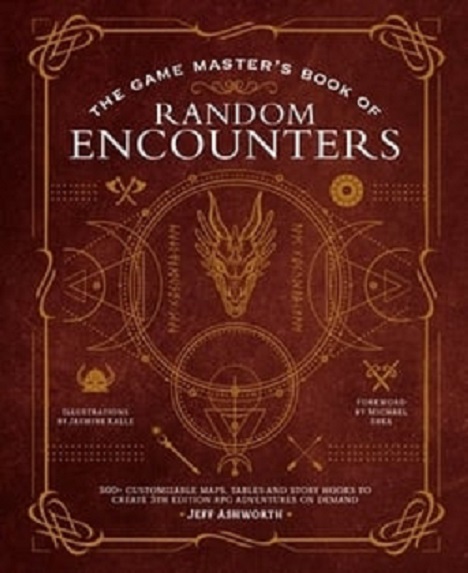Book Review: The Game Master’s Book of Random Encounters by Jeff Ashworth
I’ve been a fan of the various iterations of Dungeons and Dragons since 1979, when I first encountered people who played the game. While my involvement has waxed and waned over the years, I still enjoy reading the game products. One of the challenges that the Dungeon Master or Game Master faces is coming up with random bits of business when the player characters decide to go exploring or jump the rails of the plot.

And that’s where this book comes in. It’s designed to be dipped into when a GM needs a quick idea to fill in parts of a map previously left blank or explain the presence of a person in a new location. The first and larger portion of the book is about locations, split into commercial establishments, religious and death-related locales, outdoor spots, and living spaces of various kinds. The second part is random tables for creation of NPCs, curses, and even hidden relationships between player characters.
Each location comes with a map or two, a description of what makes the place distinctive, and a random table or two to keep the players guessing as to what will happen there. Many also have a non-player character with a paragraph of description who’s tied to the location. Some places are especially distinctive, such as the Dream Archive, a place where the city’s unconscious musings are kept, or the Nightmare Market, where the undead come to bargain with each other and the occasional foolhardy mortal. There’s some other moments of cleverness…like that one possible random occurrence at the city gaol, or the possible contents of a certain secret room.
The larger random tables in the back are more about quantity and variety of randomness–it’s up to the GM to turn the results into coherent or at least interesting characters.
This was made with the Wizards of the Coast Open Gaming License, so it’s not specifically tied to any given gaming system. On the other hand, it’s very much oriented towards the stock D&D world or clones thereof, with abundant magic and specific character classes, monsters and player character species. Those using a drastically different gaming system or a setting unlike D&D standard will need to do a lot of revising to make some of these locations or random occurrences fit.
A GM who prefers to do advanced planning might lift some of these locations in advance to place in their campaign setting at suitable map junctures. None of them are major dungeons or overly complex locations that require over-preparation.
I think this book will be most valuable to an experienced GM who has learned how to improvise but sometimes needs prompts. Newbies who need guidance to fit things together will likely feel frustrated. Most recommended to those playing D&D type games.

